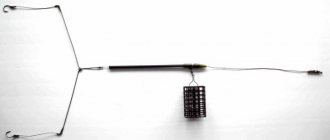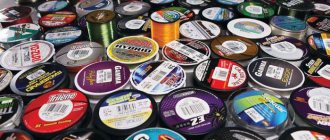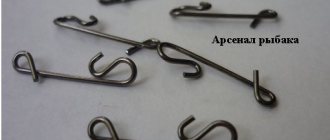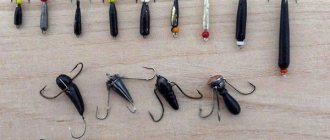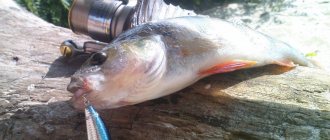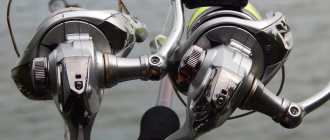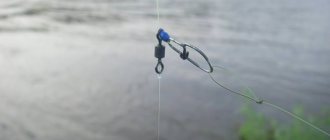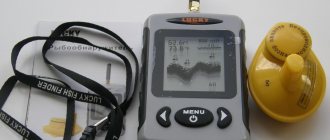Online fishing store for sea fishing Gamakatsu offers products for fishing in fresh water and powerful tackle for fishing in the open sea. A wide range of fishing tackle will satisfy the tastes of both carp fishing fans and fans of extreme sea fishing.
We are the exclusive distributors of the Pure Fishing concern in Ukraine. Therefore, we guarantee the quality of the fishing products presented and offer the best prices on the market.
In our catalog you will find products from well-known and reliable global manufacturers:
- Gamakatsu
- Abu Garcia
- Berkley
- Spro
- Mitchell
- PENN
- Extreme Fishing and others.
Assortment of the Gamakatsu online store
The entire range of fishing products is divided into separate sections:
- Sea and spinning rods.
- Inertia-free, multiplier and electric reels.
- Lures and equipment for sea and carp fishing.
- Fishing lines and sea cords.
- Hooks and fittings.
- Clothes for fisherman.
- Bags and tools for sea fishing.
A separate section of the catalog presents gear sets. Our experts have already selected for you the optimal spinning sets and marine sets, consisting of the most suitable reels and rods for different fishing conditions.
How to choose the right braid
On the shelves of specialized stores you can see products of different quality, and therefore different price categories. Therefore, the selection process must be approached seriously and knowledgeably. The outcome of the entire fishing depends on the correct choice of fishing line.
As practice has shown, braided fishing line is most suitable for certain methods of catching predatory fish. For example:
- Fishing with jig baits . Since braided fishing line has a low stretch coefficient, tackle based on this type of fishing line is the most sensitive, which makes it possible to properly control the action of the bait.
- Fishing with microjig . This is generally a topic for a separate conversation, since you need quite sensitive gear and here you can’t do without braided fishing line. By choosing a very thin fishing line, you can hope for its strength.
- For twitching fishing . Jerk fishing requires a fairly strong fishing line, and braided fishing line is suitable like no other, besides, you can choose a fishing line that is not thick, but strong.
- Fishing with poppers and wobblers , which do not have a noticeable weight, requires a thin fishing line in order to cast a light bait as far as possible.
- In winter fishing conditions , both in open water and from ice using winter fishing rods. Thanks to special impregnation and protective coating, the braid is characterized by increased frost resistance. When choosing braid for winter fishing, you need to make sure that there is an inscription that it is intended for winter fishing, since not all types of braid are resistant to sub-zero temperatures.
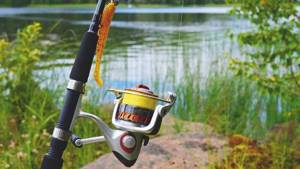
First of all, when choosing a braided fishing line, you should decide on a number of factors. For example:
- Fishing conditions . The choice of all gear, including fishing line, depends on this factor. If the reservoir is clean, without underwater surprises, then you can focus on light tackle with a thin fishing line. Otherwise, it is better to take a fishing line with a reserve thickness to cope with snags.
- Required tensile strength of the fishing line . The packaging always indicates how much weight the fishing line can hold. This may be stated in kilograms (kg) or libra (Lv). One libr corresponds to 2.2 kilograms. It is worth focusing on this indicator when there is a heavy predator in the reservoir.
- Depending on the size of the fish that is caught in the reservoir, the diameter of the fishing line is selected, taking into account the tensile strength. Moreover, the indicators largely depend on the quality of the product and its manufacturing technology. The more threads are woven into this cord, the better and stronger it is. As a rule, branded samples are of excellent quality.
- Choosing the color of the fishing line . Since there is no transparent braided fishing line, you have to match the color of the fishing line either to the color of the algae or to the color of the bottom. As a rule, fishing line in green and black colors is very popular. Brighter colors are comfortable for the spinner, but noticeable to the fish. Therefore, it is better to choose something in between.
When choosing a fishing line, you should definitely ask about the manufacturer. The more famous the company, the better the quality of the product, although it costs several times more. Instead of buying low-quality braid, it is better to use monofilament fishing line.
Fishing in Norway
We don't just sell fishing products. We ourselves love extreme and vibrant sea fishing from the shore or boat. Therefore, among other things, we organize fishing tours to Norway.
Do you dream of going on a truly royal fishing trip off the coast of Norway? Are you interested in sea fishing from the shore using a spinning rod? Join our tours soon and you can catch trout, cod, sea bass, flounder, and if you're lucky, even giant halibut.
You will be accompanied by real sea fishing professionals who:
- will help you select the necessary marine gear;
- will tell you the location of the best fishing bases;
- will accompany you to the best fishing spots in Norway;
- demonstrate the intricacies of sea fishing from a boat or shore;
- They will tell you important nuances on which the success of the entire event depends.
Types of braided fishing lines
According to the method of weaving the threads, braids are divided into 2 main types:
- fishing line woven in the traditional way: individual polyethylene fibers are collected into threads, which are subsequently used for its manufacture. In almost all such braids, the total number of threads varies from 3 to 8. Moreover, the thickness of the cord may vary depending on the manufacturing company and the technologies it uses. This also affects the diameter of the product. Also included in this category of braids are “twisted” fishing lines, in the production of which the fibers are not intertwined with each other, but are tightly twisted. Naturally, in terms of basic indicators they are significantly inferior to fishing threads made according to the classical pattern;
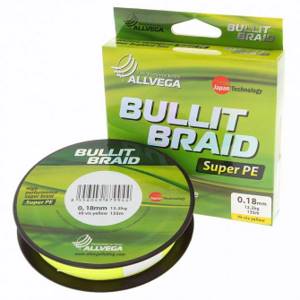
- parallel multi-filament fishing line, in the manufacturing process of which high-temperature gluing technology is used, which involves soldering individual polyethylene fibers using special substances. As a result of this operation, the fibers will remain parallel to each other. A distinctive feature of such a fishing line compared to a classic braided thread is its high rigidity, which greatly simplifies its untangling.
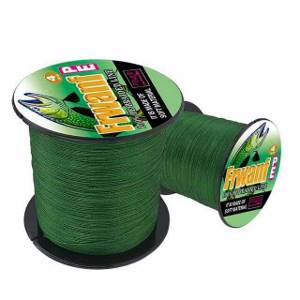
All fishing threads created on the basis of fibers can be made strong and thin due to the dense weave, but there is not much difference between the methods of their manufacture. The only difference is the price, which increases with parallel braided line.
European braided cords are divided according to the quality of the weave as follows:
- oval - the fishing line includes 4 threads with an approximate length of 5 cm, which are woven into a cord with a diameter of 1 cm - loose braiding;
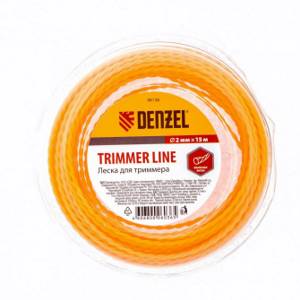
- round - 4 ten-centimeter threads woven into a fishing line with a diameter of 1 cm - braided fishing cord of average quality;
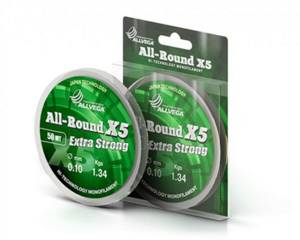
- round super braid – consists of 8 threads – high quality braid.
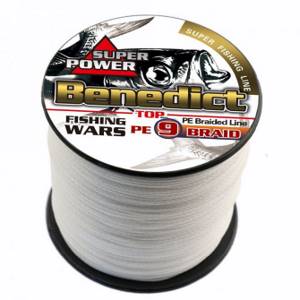
Features of the Japanese classification
Considering that in the case of most manufacturers of braided fishing lines, the diameter of such a product is a very arbitrary value, a number of Japanese brands use their own classification. The numbers used in Japanese products are actually the coefficient of cross-sectional area of a particular product in relation to a certain standard. The standard means a value of 0.165 millimeters, and is based on historically determined units of measurement. Accordingly, #1, according to the Japanese classification, is approximately 0.165 millimeters, given that the exact diameter of the braid is a rather arbitrary concept.
Braided Line Diameter
The braid diameter indicated by the manufacturer on the spool is a very approximate value that may not correspond to the real one at all.
After all, the same fishing line, even from premium brands, does not have a uniform thickness. The diameter of the braided cord is not a constant value along the entire length of the fishing line, but the value indicated on the spool is the average value of the diameter of the fishing line. The problem also lies in the fact that it is almost impossible to accurately measure the diameter of the braid, and each cord manufacturer uses its own method for calculating it, based on the ratio of the mass of the material and other parameters of the multifilament fishing line.
What diameter of braid to choose...
/10/Diametr-pletenki-192×108.jpg 192w, https://likefishing.ru/wp-content/uploads/2017/10/Diametr-pletenki-384×216.jpg 384w, https://likefishing.ru /wp-content/uploads/2017/10/Diametr-pletenki-561×316.jpg 561w, https://likefishing.ru/wp-content/uploads/2017/10/Diametr-pletenki-1122×631.jpg 1122w , https://likefishing.ru/wp-content/uploads/2017/10/Diametr-pletenki-364×205.jpg 364w, https://likefishing.ru/wp-content/uploads/2017/10/Diametr- pletenki-758×426.jpg 758w, https://likefishing.ru/wp-content/uploads/2017/10/Diametr-pletenki-728×410.jpg 728w, https://likefishing.ru/wp-content/ uploads/2017/10/Diametr-pletenki-608×342.jpg 608w, https://likefishing.ru/wp-content/uploads/2017/10/Diametr-pletenki-1152×648.jpg 1152w, https:// likefishing.ru/wp-content/uploads/2017/10/Diametr-pletenki-85×48.jpg 85w, https://likefishing.ru/wp-content/uploads/2017/10/Diametr-pletenki-171×96 .jpg 171w" data-sizes="(max-width: 854px) 100vw, 854px" /> Braid diameter
What does the question mean: “what diameter of braid to choose” if it is not specified for what?
It means absolutely nothing without clarifying the parameters of the gear and fishing method. Moreover, if we talk about braid for spinning rods, for example, then the diameter of the braid can also fluctuate over a wide range. For spinning, ultralight is thin, delicate cords; for jig-spinning, it is much stronger, depending on the weight range of the baits used. What braid diameter should I choose in each specific case? Let's look at this in more detail, but first, a few facts about braid.
Facts about braid

What you need to know about braided fishing line:
- the braid has almost no stretch (zero stretch), which is very good for controlling the bait and registering a bite, but not so good for landing fish;
- braided cord is much stronger than any monofilament line (monofilament);
- depending on the type of weaving, multi-fiber thread can be round and flat in cross-section (round braid has less sail and sinks faster);
- braided fishing line, especially without impregnation, absorbs water, so it cannot be used in winter (with the exception of special cords and impregnated from freezing);
- Braided line very quickly cuts through low-quality rod rings;
- not all knots for regular fishing line are suitable for braided line (they have a lot of slip);
- Braided fishing line is more expensive than regular line, but it's worth it.
Everything described below is a recommendation; the diameter of the braid is within reasonable limits and may differ from those indicated in each individual case.
Diameter of braid for spinning
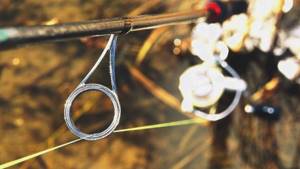
What diameter of braid should I choose for spinning rod? You can rant endlessly on this topic, saying that not everything is so simple here and “blah blah blah,” but we will try to be more specific.
The diameter of the braid for spinning depends on the following parameters:
- test your spinning rod and reel class;
- weight of the baits used.
- the size of the expected fish you are going to catch;
When it comes to choosing a braided fishing line for spinning, you should keep in mind that it is two or more times stronger than regular fishing line. Therefore, if you used monofilament with a diameter of 0.3 mm, you should choose a braid with a thickness of no more than 0.15 mm. You will be surprised how far your bait will fly.
Spinning rod for pike
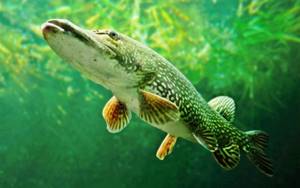
“What kind of braid for pike” is what they often ask in stores.
Braid for pike? Are you seriously? Okay, let's once again draw an analogy with a regular fishing line. If you previously caught pike up to 3-5 kg and monofilament with a diameter of 0.3 mm was enough for you, then braid with a thickness of 0.08 - 0.1 mm can hold this weight. Braid with a diameter of only 0.1 mm will definitely suit pike up to 5 kilograms.
Thicker braid will be able to withstand more, but with thickness the casting distance decreases and when hooked it is very difficult to break. You should also not get carried away with excessive thinning, since the thinner the braid, the faster it wears out and the less service it has. A compromise needs to be found here.
For catching pike up to 5 kg, braid with a wide range of diameters is suitable - from 0.06 mm and thicker. For light baits and ultralight spinning rods we use up to 0.08 mm, for a medium-weight jig, braid up to 0.14 mm is suitable, for a heavy jig spinning rod you should choose from 0.14 to 0.18 mm. So we figured out what kind of braiding is needed for pike.
Conclusion: the diameter of a suitable braid for spinning is no longer tied to the type and size of the fish, but to the power of the rod and the weight of the baits used. No matter what you will catch - perch, pike, pike perch or other fish, it is important that the braided cord matches the power of the tackle as a whole (spinning rod + reel + bait).
Braided lines from different manufacturers can differ significantly in breaking load for the same diameter, so this also needs to be taken into account.
Braided fishing lines for spinning - video
If you know very little or nothing about braided fishing lines and want to learn more, we recommend watching the film by the Shcherbakov brothers dedicated to choosing a braided fishing line for a spinning rod and about braided fishing lines in general:
Diameter of braid for feeder
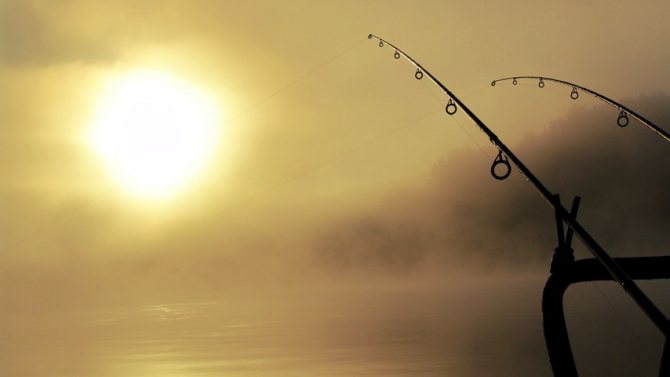
Everything that we said about braid for a spinning rod is generally true when choosing a braided line for feeder gear. Only instead of the power of spinning rods, you should take into account the power of the feeder gear and the weight of the feeders used. Many parameters of braided fishing line that are important in a spinning rod are not taken into account for the feeder.
The main thing is that the fishing line can withstand the critical load that occurs when casting the feeder.
To throw a feeder weighing 100 grams over 50-60 meters, the peak load for the cord is no more than 5 kg, and for a 150 gram load - no more than 7 kg. These are approximate figures that you can use as a guide when choosing a cord based on the test breaking load.
General recommendations for choosing braid for a feeder:
- For fishing without current with feeders up to 30 grams, a cord with a diameter of 0.05 mm with a shock leader is suitable.
- For fishing in the current with feeders up to 150 grams - braid with a diameter of 0.17 mm.
How to measure the diameter of braid
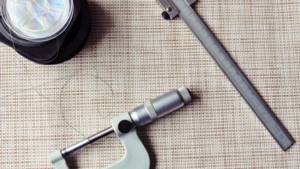
braided fishing line is not as simple a task as it might seem at first glance, but almost solvable.
Why can't you accurately measure the diameter of braided fishing line? The thing is that, unlike monofilament, a braided cord consists of many ultra-thin threads connected by a special weave with or without impregnation. Even with slight compression of the cord with a measuring tool (micrometer), we get incorrect measurements at the output. In addition, the braid may initially have a flat cross-section rather than a round one.
It would seem: if we know the number of threads in the braid, what could be simpler than taking and “adding” the diameters of all the threads and getting the total diameter of the braided cord? Theoretically, knowing the cross-sectional area of each thread in the cord, it is possible to determine the total diameter of the cord, but the problem is that the diameter of each thread is significantly different from each other and different along the entire length. And moreover: who said that the number of micro-threads is generally known and that it is a constant value? So this measurement method is also very inaccurate.
So how do you measure the diameter of a braided fishing line?
We can use a little trick: if we tie a regular single knot on a braided fishing line and tighten it, its density will allow us to use a micrometer and find out the size of the knot. If you tie several knots on one fishing line, their size will differ from each other within the limits of error. Thus, we can take the thickness of the knot as the conditional size of the thickness of the braided line.
If we divide the thickness of the knot by two, we get the diameter of the braided thread close to the real one.
It should be understood that this method does not give us an absolutely correct result, but it allows us to compare the thickness of different braided lines with sufficient accuracy. Having in hand a “standard” of braided thread, let’s say 0.15 mm in diameter, and knowing the exact size of a simple knot on it, we get the opportunity to compare.
The Shcherbakov brothers even made a video about this:
Network. How to determine the diameter?
What do you think about this issue?
likefishing.ru
